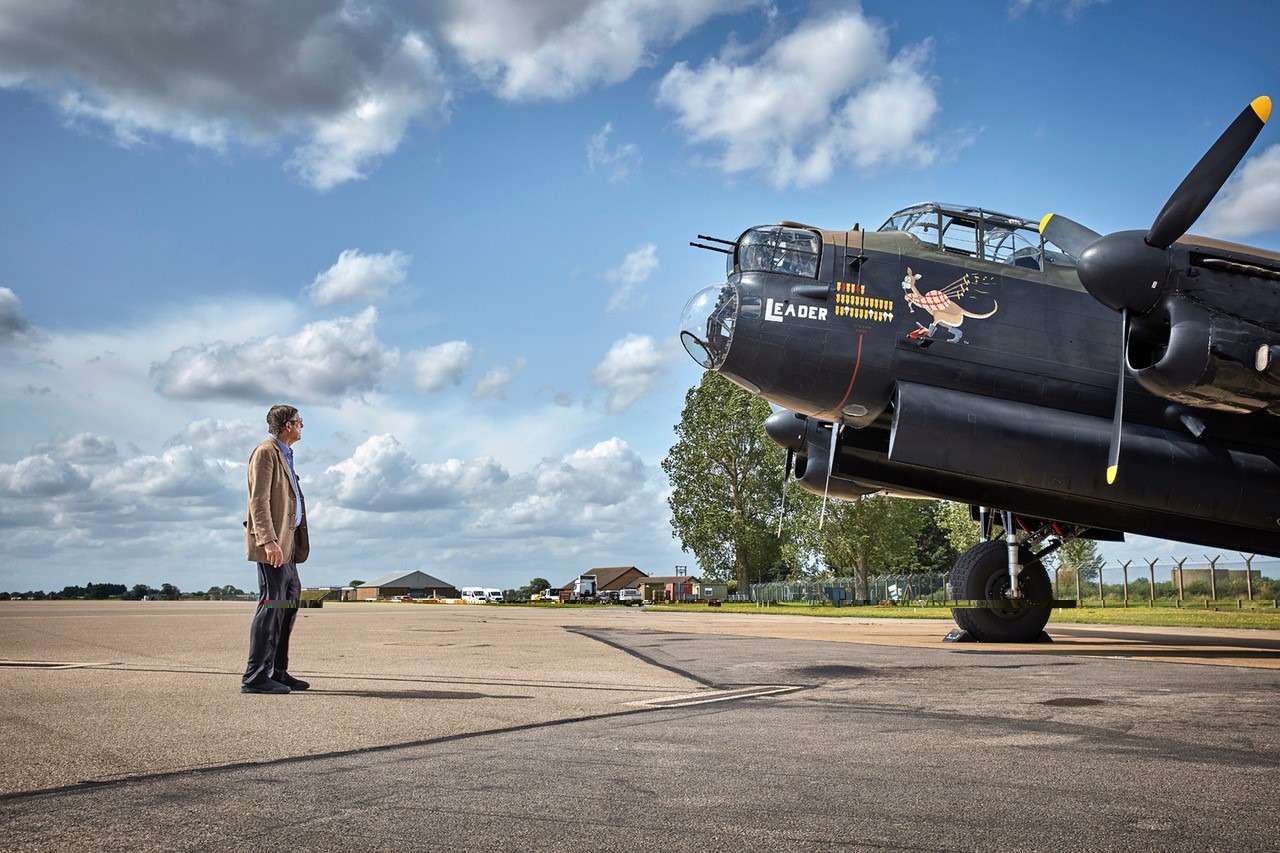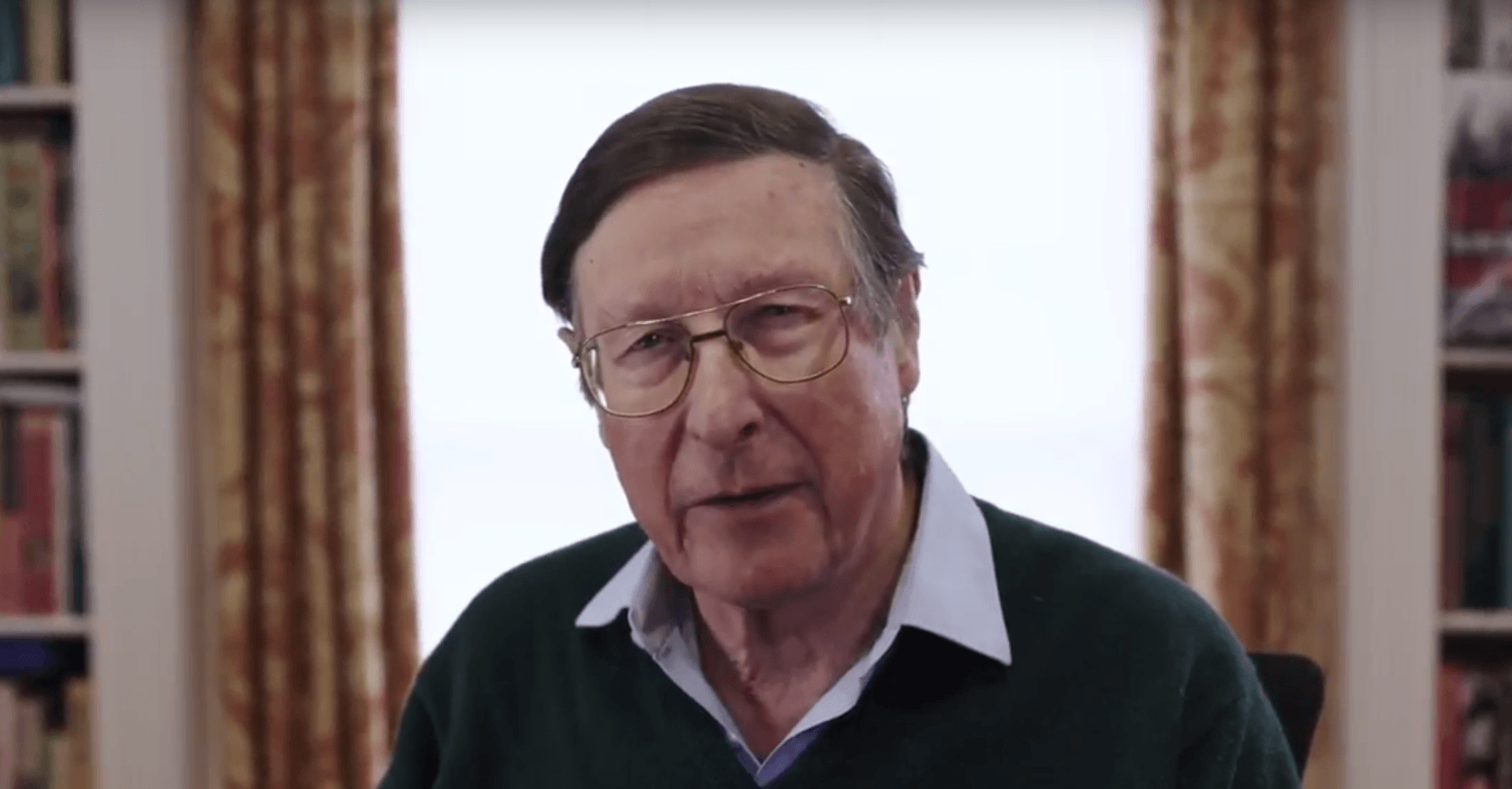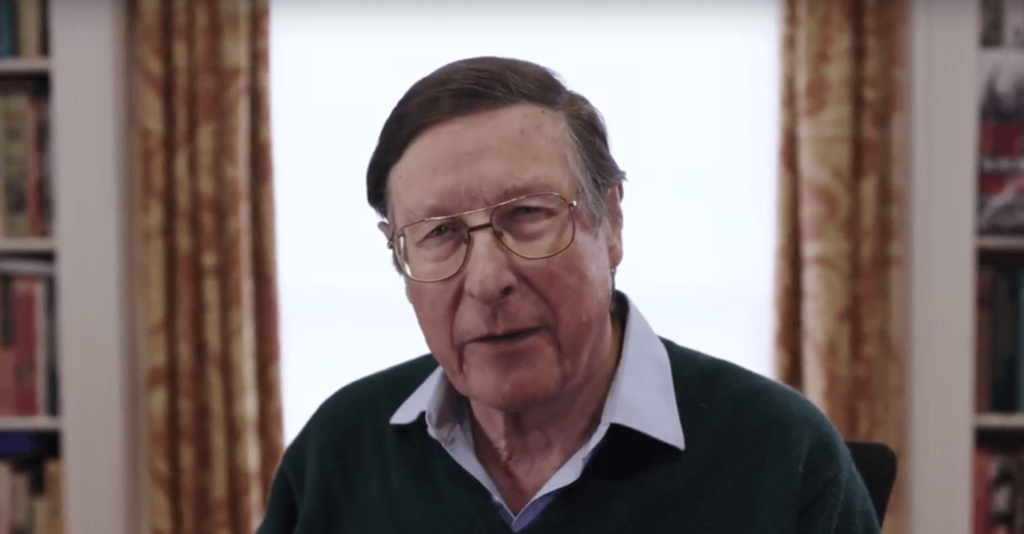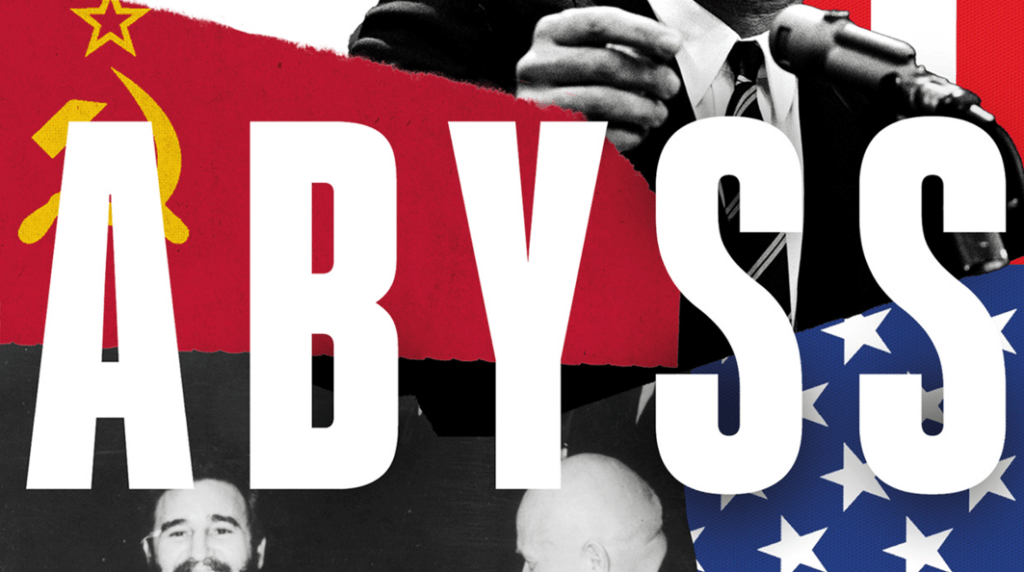There were dams; a dog with an embarrassing name; a march that everybody over 40 can hum.
These memories of Operation Chastise, the RAF’s ‘bouncing bomb’ attack which burst Germany’s Mohne and Eder reservoirs on the night of 16/17 May 1943, cling to the consciousness of millions of people who may not know much else about the Second World War.
Wing-Commander Guy Gibson’s biographer has written: ‘The story of 617 Squadron’s breaching of the dams has joined that group of historically based tales- like King Arthur, or Robin Hood- which defy all efforts at scholarly revision’.
Like most of my generation, I grew up embracing the legend, my enthusiasm sparked by Paul Brickhill’s 1951 book, then fanned into ecstasy by Michael Anderson’s 1955 The Dam Busters, most popular British war movie of all time. Matinee idol Richard Todd portrayed Gibson; Michael Redgrave played the bomb’s inventor, engineer Barnes Wallis. The story seemed to reflect a heroism that was victimless, save for fifty-three dead among the young men who made the attack. It carried none of the moral baggage that has become associated with the offensive against Germany’s cities.
Yet among the reasons I have written a new book about Operation Chastise, as the RAF christened it, is that in the 60-odd years since I first saw the movie, I have come to understand how much we then believed, which was wrong. The dams raid killed up to 1,400 people- more civilian deaths than had been generated by any previous RAF attack on Germany.
At least half were not Hitler’s people, instead his foreign slaves, almost all women, drowned in the Biblical flood- the Mohnekatastrophe, as Germans call it- unleashed by the bouncing bombs. It is fascinating that Guy Gibson afterwards reflected uneasily about this, as his senior officers never did, writing in 1944: ‘The fact that people… might drown had not occurred to us…No one likes mass slaughter and we did not like being the authors of it’.
Four decades ago, when researching my book Bomber Command, I interviewed towering figures of that era, including Air Chief Marshal Sir Arthur Harris, the wartime commander-in-chief of Bomber Command; dambuster ‘Micky’ Martin; Leonard Cheshire VC; Barnes Wallis and many others.
The RAF’s Battle of Britain Flight flew me in its Lancaster bomber, an unforgettable experience. The roar of its four Rolls-Royce Merlin engines, like a battery of giant lawn-mowers, was orchestral theme music for a generation. I sat in the rear turret with my long back sticking out through its doors while our accompanying Spitfire and Hurricane made passes, to give me a gunner’s-eye view of an attacking fighter. Unromantically, the experience made me feel horribly airsick. I was consoled by discovering that more than a few 1943 ‘dambusters’ suffered in the same way, as they trained over England at extreme low level, stampeding cattle, horses and motorists.
As I wrote CHASTISE, those memories clung to my imagination. The book reflects, in part, an emotional journey from the naivete of a childhood view of World War II, to a much more nuanced 21st Century take. I grew up among the debris of the blitz; spent my youth seeking adventures, many of them among soldiers- parachuting with the British Army, reporting wars.
Proust wrote about adolescence: ‘there is hardly a single action we perform in that phase which we would not give anything, in later life, to be able to annul’. Today, I look back with mild embarrassment on my own excesses, rooted in a yearning to prove that I was not the ’drip’, the coward, I was branded on school football fields. I have long since acknowledged that moral courage is far more precious- because rarer- than the physical kind, which in childhood we were encouraged to exalt above all else.
I have learned a lot about heroes, especially about how unpopular such people often are, among their comrades. Interviewing a gunner who served under Guy Gibson, I was shocked when in 1977 the old man observed sourly of this national icon: ‘He was the sort of little bugger who was always jumping out from behind a hut to tell you your buttons were undone’.
Most of those who find themselves on battlefields want to be led by officers who will do their duty, but who will also try to bring them home alive. In the company of uncommonly brave people, those of mortal clay often mutter to each other: ‘It’s alright for him’– nowadays also her- ‘if they want to win a VC, but what about us?’.
Gibson, who was appointed in March 1943 to form 617 Squadron to attack the dams, was a lonely figure, and in most respects a tragic one. Though his birth certificate declared him to be 24, he was far older in cruel experience. After an early childhood in India, his mother abandoned her much older husband and came to England, where she became an alcoholic. While Guy was a schoolboy, she served a prison sentence for driving offences. When drunk on Christmas Eve 1939, her clothes caught in the element of an electric fire, precipitating a horribly protracted death from burns.
It is not surprising that her son carried demons. He became known as one of the RAF’s most forceful and courageous leaders, veteran of 172 operational sorties, yet was little loved by his comrades because of a bossiness to underlings, a harsh intolerance of weakness. Early in the war he married a showgirl eight years older than himself, but by 1943 their marriage was a sham: both consoled themselves elsewhere.
Since embarking upon this book, again and again I have been asked a nervous question: ‘’what are you going to say about the dog ?’. The British people are obsessed with Guy Gibson’s Labrador, which he loved more than any other living creature. A historian’s answer must be that Nigger’s name is as much a fact as were our ancestors’ customs of hanging sheep-stealers, shooting military deserters and imprisoning homosexuals. They said and did things differently then.
Between March and May 1943, at Scampton airfield in Lincolnshire Gibson assembled 150 British, Canadian, and Australian airmen, together with a single American and two New Zealanders. They were of an age with today’s gap-year teenagers, or at most students at uni. I muse upon the privilege of having myself survived into my seventies, whereas the lives of most of 617’s fliers became forfeit before they knew maturity, fatherhood, in many cases love or even sex.
Many aircrew whom I met 40 years ago frankly avowed wartime virginity. One man, 19 in 1943, described walking back one night from a Yorkshire pub to his airfield. A Waaf- woman airman- accompanying him, feeling sentimental as did many girls about boys likely to be dead within weeks, invited him behind a hedge.
I never hesitated to believe his account, because he offered such a pathetic reason for spurning her offer: ‘The medical officer had told me I was anaemic, and that I needed to keep up my strength for operations’. ‘Micky’ Martin, with his Australian disdain for the English class distinctions that persisted into the RAF, once observed to me that while old Marlburian John Hopgood, former Eton ‘swell’ Henry Maudslay and other ex-public schoolboys on 617 Squadron were good pilots, ‘they wouldn’t have had a clue how to go out screwing with their gunners on a Saturday night’.

Bomber Command’
They all still thought it the best joke in the world to pull off each other’s trousers in the mess after dinner. Instead of confiding in wives or lovers, many were still writing letters to ‘Dear Mummy’. Almost all were too young to have caught first releases of Fred Astaire and Ginger Rogers movies. Several, like Gibson himself, had already crowded into wartime careers horrors- hairbreadth escapes from death- that we should think terrifying if spread over three score years and ten.
Duty is a word that invites 21st Century scepticism, even derision, yet was a real force in the lives of many. So was God. Flight commander and former Oxford oarsman Melvin Young wrote to a friend in 1939: ‘Since we are to have a war, I am more than ever glad that I am in the air force. It is a happy, healthy life while it lasts, and I have found some old friends and made many new ones…I am not frightened of dying if that is God’s will, and only hope I may die doing my duty as I should’.
John Hopgood, the 21-year-old whom Gibson rated best pilot in the squadron, wrote after a village church service a few years earlier, in praise of the sermon: ‘the theme was that the greatest gift of God to mankind was the inability to see the future, and that to face the future we need God’.
Many showed the stress that oppressed them after so often dancing with death, knowing that they must soon do so again. A word-portrait of Hopgood was drawn by his half-sister Betty, at home on what would prove his last leave: ‘He looked pale and very drawn and was smoking heavily, his fingers yellow with nicotine strains. He spoke little of what he was doing (sworn to secrecy) and seemed to find comfort in playing Chopin, Mozart etc. on the piano, which he did beautifully’.
The men of 617 were to be branded by posterity a band of brothers. In truth, of course, like all gatherings of humanity they were a mingling of the good, the bad and the ugly, who never had time to get to know each other well. Only one of Gibson’s own crew had ever flown with him on an operation.
He assembled a core of veterans, including Hopgood, Martin and 20-year-old fellow-Australian Dave Shannon. Far from being all volunteers, however, as legend suggests, half the dambusters were drafted, some unwillingly. Several had completed only a handful of operations and three flight-engineers had flown none at all. This made Gibson’s achievement all the more amazing, that he trained them against the clock to execute Chastise.
A teenage pilot of 1917 vintage wrote: ‘We lived supremely for the moment. Our preoccupation was the next patrol, our horizon the next leave. Sometimes, jokingly, as one discusses winning the Derby Sweep, we would plan our lives ‘after the War’. But this had no substantial significance. It was a dream, conjecturable as heaven, resembling no life we knew. We were trained with one object- to kill. We had one hope- to live’.
A generation later 617’s men were no different, save that few saw themselves as killers. Waaf Eileen Strawson, the squadron commander’s driver, was a farmer’s daughter. Approaching Lincoln one day, they hit a cockerel which was trapped flapping in the car’s front fender. When the girl matter-of-factly wrung its neck, Gibson said squeamishly ‘I don’t know how you could do that’. She shrugged: ‘I’ve killed hundreds of chickens’.
John Hopgood’s sister asserted after his death: ‘One of the reasons he went into Bomber Command was that he didn’t wish to see the results of human suffering from the weapons of war. He felt that to be in the clouds would separate him from the awful act of killing’. During those weeks in which Gibson and his men prepared for Chastise, the last thing on their minds was the notion of becoming instruments of death for anybody save, most likely, themselves.
Barnes Wallis, inventor of the ‘bouncing bomb’ was the only scientist to achieve membership of Britain’s popular pantheon of World War II, behind Winston Churchill, but alongside Ultra codebreaker Alan Turing. He is sometimes portrayed as a gentle genius. In truth, he was as ruthless as are all obsessives.
Even as Gibson was training his squadron to attack the dams from a height of a mere 150 feet, Wallis was still testing prototypes of his bombs, codenamed Upkeeps- and watching them fail. Three weeks before the attack, the elderly engineer presented the youthful airman with a brutal proposition: he said he now realised that Upkeeps would work only if released at a height that reduced the shock of collision with the water.
Unless Gibson’s squadron could drop them from just sixty feet- twenty yards- the whole dambreaking idea was doomed. Wallis now asked if 617 Squadron could do this in darkness over Germany, under enemy fire, while a little engine and driving belt beneath each fuselage backspun the 4 1/2 ton Upkeep cylinders at 500 rpm. Here was a ghastly responsibility to impose upon Chastise’s leader: acceptance of risks far beyond those of normal bomber operations- which, heaven knows, were great enough.
Of course the airman said yes. In the circumstances of 1943, when just one in five of Sir Arthur Harris’s men completed a ‘tour’ of 30 operations and actuarially Gibson himself should have been long dead, he refused to admit anything impossible, if one had the guts.
Twenty-four hours before the raid was launched, when Gibson had begun confiding to his key men the secret of their objectives, news was broken to him that Nigger had run onto the road outside the airfield, been killed by a passing car. The squadron CO was already exhausted, running only on adrenalin, suffering chronic pain from inflammation in his feet, which he dared not assuage with medication, lest this dull his reflexes in the air. Now, he had also lost his best beloved companion.
Barnes Wallis, who had flown up to Scampton, never cared sixpence for any animal, but was terrified this private tragedy would unbalance Gibson at just the moment it was vital he should give his all. It says everything about the young man that he never flinched; and something about his unpopularity, that when he ordered a mechanic in the station workshop to make a coffin for the dog, the airman stubbornly refused, on the grounds this had nothing to do with his duties. Nigger was buried outside Gibson’s office, without a coffin.
The 19 aircraft destined for the dams took off at intervals between 9.30pm and midnight on 16 May 1943. Gibson personally led nine Lancasters, while five were dispatched to the Sorpe, with a final five intended as reserves, to attack whatever targets earlier waves failed to breach. Just four decades after the Wright Brothers launched heavier-than-air flight, the men of 617 Squadron lifted their big, ungainly, but somehow beautiful aircraft from the tranquillity of an early summer evening in the Lincolnshire countryside, to cross the North Sea below German radar, almost kissing the waves.
That outbound trip was an epic in its own right. One pilot caught the water, tearing the bomb off his Lancaster, yet somehow survived to stagger home. As they flew overland at tree-height into Germany, two more collided with power cables, killing the crews. Another was dazzled by a searchlight which caused him to dive into the ground. Yet another plane was hit by a shell that wrecked its communications, forcing the pilot to abort. One more turned back after hours hopelessly lost. What was remarkable was not this savage attrition, but instead that eight Lancasters reached the Mohne, shortly after midnight.
Gibson wrote of the dam: ‘It looked squat and heavy and unconquerable in the moonlight’. Forty-two minutes elapsed between the Lancasters’ arrival and departure, which proved among the most memorable of the Second World War. Three-score fliers waged a private struggle, in which the only other participants were forty-odd German gunners, together with a few mesmerised, horrified civilian spectators.
Gibson led the way, of course, diving his own G-George towards the lake to initiate the first and last operational employments of Wallis’s Upkeeps. The airman wrote later: ‘This was a horrible moment; we were being dragged along at four miles a minute, almost against our will. I think at that moment the boys did not want to go. I know I didn’t want to go. I thought to myself ‘In another minute we shall be dead- so what ?’.
History knows the rest: despite the deaths of Hopgood, Maudslay, Young and almost all their crews, 617 Squadron breached the Mohne and Eder dams. Two other crews failed against the Sorpe, thus leaving sufficient water supplies to service Ruhr industry. They inflicted upon the German war machine not the devastating economic blow Britain’s warlords had sought, but instead temporary disruption, together with a human catastrophe.
The power of water in human affairs, both for good and evil, is almost beyond imagining. The breaching of the Mohne unleashed a tidal wave sometimes forty feet high, which swept the Sauerland with primaeval force, creating floods that eventually extended a hundred miles.
It was too much to expect that most British people would sympathise with the civilian victims, though in my book I quote some who indeed did so. Operation Chastise was a supreme piece of military theatre, and in May 1943 theatre was precious to the allied war effort. On Tuesday the 18th the story made headlines across the land. The Times account was headed RUHR DAMS BREACHED- DARING LOW-LEVEL ATTACK BY LANCASTERS- WALLS BLASTED OUT WITH MINES.
The weary British had endured four years of blackouts, rotten food, family separations, spasmodic terrors, only recently assuaged by a few battlefield successes. The dams raid lifted their spirits, revived confidence in their nation’s genius, impressed the Americans as had few other feats by Churchill’s people since the 1940 Battle of Britain.
The men of 617 Squadron, 11 crews out of 19 that survived Operation Chastise, became the focus of national adulation. Clementine Churchill was enchanted by Gibson himself, who was always seen to more advantage by big people than by little ones. She wrote soon after the raid: ‘He is a perfect poppet- so young & modest. He is 25 but looks 18. I thought what a nice husband he would make for Mary but Alas! He has been married for 3 years’.
A Scampton Waaf attached the purple ribbon of the Victoria Cross to Gibson’s tunic. Even as she stitched in his quarters, however, he laid bare to her the unhappiness that enveloped him amid the celebrations. His words tailed off into piercing memories of his lost dog. Again and again he said: ‘my Niggy’s dead…’
Less than a quarter of Gibson’s men witnessed the European war’s ending in May 1945. Of 133 who had taken off and 77 who returned safely to Scampton on that triumphant morning two years earlier, just 32 survived. The most famous was not among them.
Gibson was featured as castaway on an early Desert Island Discs, at the end of which host Roy Plomley signed off his guest by saying ‘Good luck, happy landings’. Gibson responded ‘Goodnight, everyone’, There were no happy landings. He was shot down and killed over Holland on the night of 19 September 1944.
I confess to a contradiction in my view of the dams raid. Since the 1940s most British writers have focused upon the airmen’s triumph, said little about the human tragedy. My book seeks to shift that balance, yet I do not believe that a just 21st century compassion for the victims need diminish our admiration either for the inventor of the bouncing bomb, or for the fliers who delivered it.
Britain’s greatest living historian Professor Sir Michael Howard, a close friend who is today 96, himself fought in those days, winning an MC with the Coldstream Guards in Italy. He said to me: ‘Nobody can wage a struggle for national survival and keep completely clean hands. We make war as we can, rather than as we should’.
Elena Wolkowa was among the slave labourers who inhabited the camp at Neheim, below the Mohne, of which most of the occupants, trapped in their wired compounds, perished beneath the 17 May tidal wave. For months, she had been conducting a secret affair with a German guard, who on the fatal night helped Elena and some other women to flee.
On 16 June 1945, the couple were married in Neheim’s church of St.John the Baptist, where two years earlier hundreds of the dead from the flood were laid out. The bride wore her German sister-in-law’s wedding dress. A choir of liberated Russian prisoners sang in the organ loft.
On the Mohne dam wall last autumn, I stood before a plaque which records in German and English: ‘A trail of devastation was left throughout the valley…Men, women and children died…This strategic action did not have the military effect expected. This memorial is also a symbol of peace’.
Max Hastings’s piece which first appeared in The Times Saturday Magazine
Photo: Max with the Battle of Britain Flight’s Avro Lancaster, RAF Coningsby August 2019 (C) Robert Wilson




